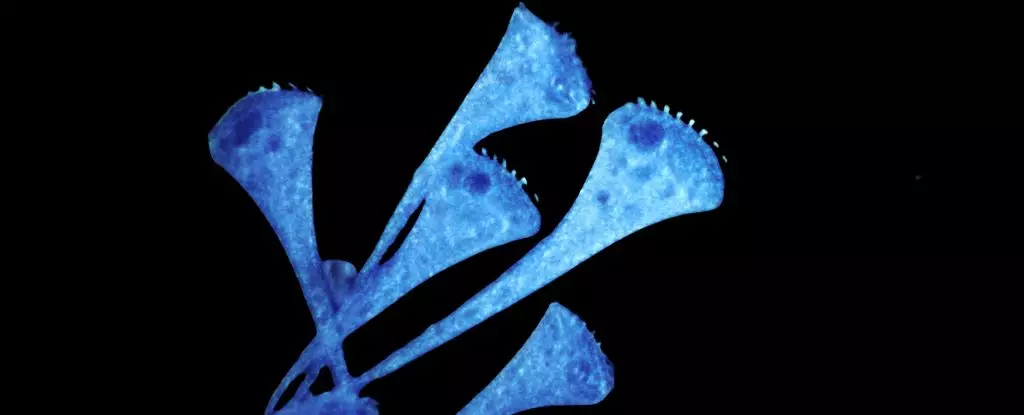For many years, the understanding of learning and memory has been firmly anchored in the realm of organisms endowed with complex nervous systems. However, groundbreaking research hints that even the most primitive life forms possess a form of learning that challenges this long-standing perspective. Studies indicate that individual cells, akin to single-celled organisms such as amoebas and ciliates, may exhibit habituation—a basic learning process where an organism’s response to a stimulus diminishes with repeated exposure. This revelation prompts a profound question: how do entities devoid of a brain engage in such complex behavioral adaptations? Such inquiries could potentially shift our understanding of intelligence beyond animal constraints.
The investigation, led by neuroscientists from the Max Planck Institute, utilizes innovative computer modeling to explore molecular interactions within mammalian cells and simpler unicellular organisms. Through this computational approach, they identified four distinct molecular networks capable of dual-response systems. This duality is crucial in defining habituation; one molecular response wanes more slowly than its counterpart. In practical terms, this implies that the gradual fading of a slow response can hinder a cell’s immediate reaction to repeated stimuli, showcasing an adaptive mechanism that allows the cell to effectively “ignore” persistent non-threatening stimuli. Once the prolonged response diminishes, the cell’s original reaction strength is reinstated. This duality in cellular responses could be interpreted as a rudimentary form of memory, a concept once considered exclusive to higher organisms.
Biologist Rosa Martinez from the Centre for Genomic Regulation articulates the potential significance this discovery holds for cellular dynamics. If confirmed, this “cellular memory” could provide insights into how cells process information and respond to their environments. The possibility that cells can adapt their reactions demonstrates an evolutionary advantage, allowing them to fine-tune their responses based on experience. This adaptive learning could represent a fundamental survival mechanism for organisms, enabling them to engage more effectively with their surroundings.
One of the most compelling implications of this research lies in its potential applications within cancer treatment. If indeed these molecular networks are validated as a form of cellular memory, understanding their functioning could lead to profound breakthroughs in oncology. Scientists believe it might be possible to prevent immune cells from becoming unresponsive to tumor cells, akin to a delusion where cancer remains “invisible” to the immune system. Creating methodologies to alter immune perceptions of tumors could drastically shift treatment paradigms, fostering a more robust immune response to malignancies—transforming what is currently an ideological pursuit into a tangible research field.
The prevailing notion that genuine learning is an exclusive trait of complex organisms may soon be challenged as more studies emerge. These findings serve to highlight a broader definition of intelligence, one that encapsulates an array of life forms beyond traditional boundaries. As noted by Lina Eckert and her colleagues, the historical discourse surrounding the concept of learning outside the realm of animals has often been tainted by ideology. Yet, if cells can learn and adapt, this opens a Pandora’s box of thought-provoking questions regarding consciousness and sentience at cellular levels.
The exploration of how single cells manage to learn and adapt demonstrates an exhilarating frontier in biological research. The intricacies of their molecular networks not only promise insights into fundamental life processes but also present opportunities for transformative breakthroughs in fields such as cancer treatment. As the scientific community continues to unveil the mysteries of cellular learning, we stand on the precipice of redefining the very essence of intelligence, urging us to reconsider the cognitive capabilities that might exist even within the simplest forms of life.


Leave a Reply